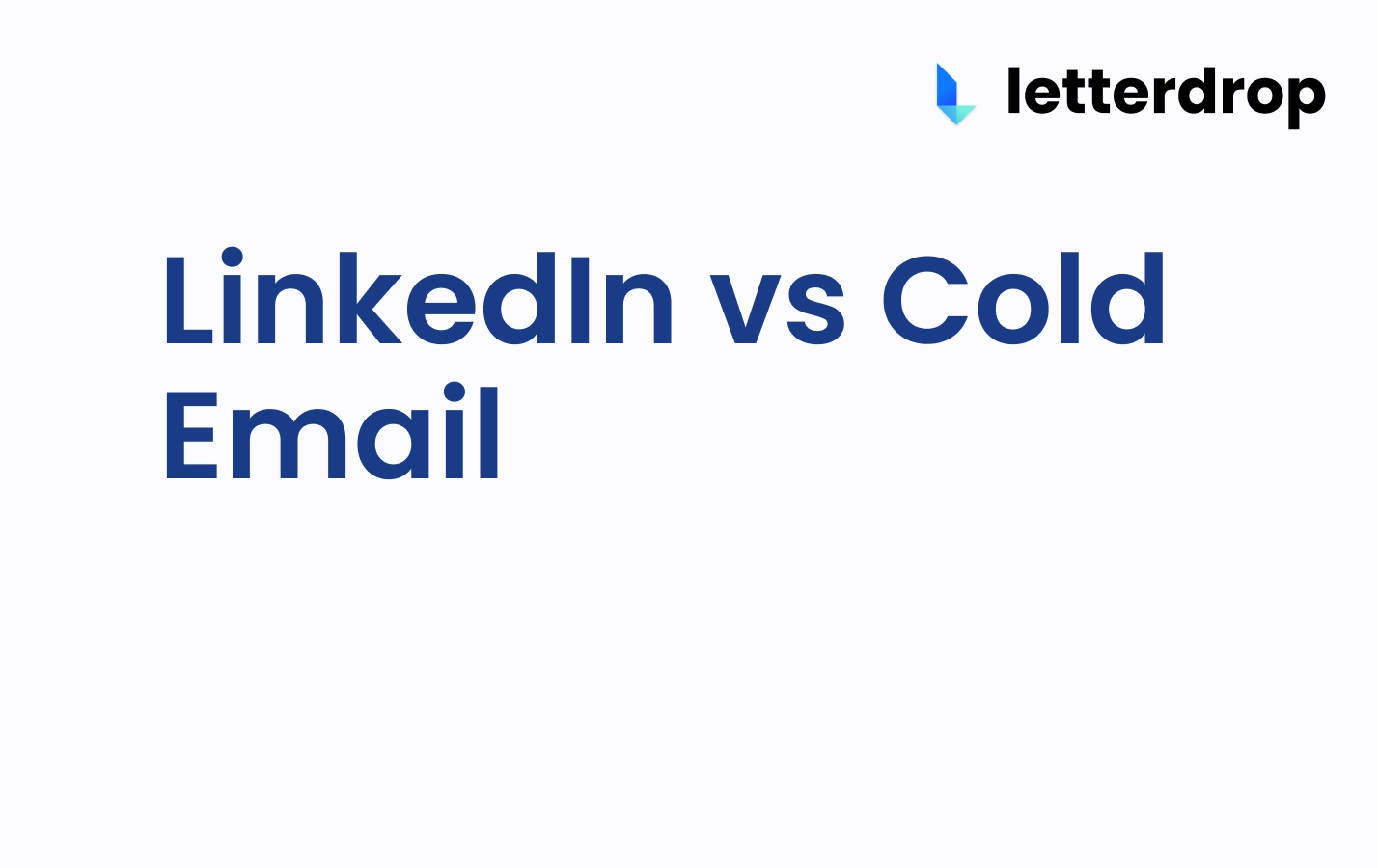How to Create Sales Enablement Content that Closes Deals
TL;DR:
- To create effective sales enablement content, talk to customers, understand the buyer journey, and collaborate with the sales and customer support teams.
- Sales reps should use sales enablement content at each stage of the sales cycle and corresponding stage in the buyer journey to nurture prospects and address their needs.
You want your content to land with your audience and drive conversions. Your Sales Team want to close deals.
Whether you're a Content Marketing Manager or someone on the Sales Enablement team, creating compelling sales enablement content can help the Sales Team close those deals and ultimately influence the top line. It's a win-win scenario.
According to a study, 95% of buyers prefer to choose a provider who offers content that helps them navigate the buying process.

Without good sales enablement content, your company will likely have incredibly long sales cycles and miss out on multiple opportunities to close new accounts.
So, how do you write sales enablement content that actually helps do the trick?
In this guide, we'll show you:
- Where to find ideas for sales enablement content
- How exactly your Sales Team should use sales enablement content
- What formats you should use
Once you're equipped with a solid strategy, you'll be pushing out sales enablement pieces that close the deal in no time.
What is Sales Enablement Content?
Sales enablement content is content made for the Sales Team to give to prospective customers, providing answers to common questions and helping them understand the product better. At the end of the day, it should help your Sales Team close deals.
Content for sales enablement also requires continuous improvement and updates to keep it relevant.
Essentially, sales enablement content educates prospects by addressing any questions and concerns they may have about the product and persuades them to buy.
We've experienced great results at Letterdrop since using sales enablement content in prospecting emails — in fact, our cold email engagement rates have gone up 4%.
How Do You Decide Which Content to Create for Sales Enablement?
Sales enablement content needs to be genuinely helpful to actually influence a buying decision, which is why it's so important to know exactly what your ICP needs from you.
Here are the ways you can get inspiration for helpful sales enablement content.
1. Talk to Customers
Where better to learn what content to cover than directly from existing customers? Talk to them either over video chat or in person to find out:
- What challenges they face
- What they care about
- What tools they're currently using
- The ins and outs of their job
- What kinds of solutions they're looking for
Sales calls are also a source of valuable marketing insights, so try and watch as many call recordings as you can. Letterdrop has a handy feature that lets you pull content ideas directly from sales calls automatically, so you don't have to spend hours combing through call footage.

2. Understand the Customer Buyer Journey
While closing an enterprise deal may be different to closing a small business deal, the buyer journey generally has four stages:
- The unaware phase. At this point, a prospect is just learning about the space.
- The problem-aware phase. The prospect is aware of an issue they're facing and starts searching for solutions.
- The solution-aware phase. The prospect is aware of multiple solutions and is weighing up their options.
- The product-aware phase. By now, the prospect knows enough to confidently choose a solution and transform into a paying customer.
You need to align these stages with appropriate content for your Sales Team to use. For example, there's no point in giving a prospect in the unaware phase a product-led article. At that point, they have no idea who you are or why they have any need for your product.
You can then audit your existing content since it's more than likely that you'll find pieces that can either be used for sales enablement as-is or updated to become sales enablement content.
If you understand what your customer is looking for and when, it's easier for you to know what content will land.

3. Talk to Your Sales Team
Nobody understands what resources could help close deals better than your sales reps themselves. You should:
- Ask your Sales Team for insights on what they need to best answer frequently asked questions and concerns.
- Use their answers to customers in sales calls as fuel for your content
- Set up a workflow for gathering these insights, like opening a Slack channel specific to sales feedback or creating a spreadsheet.
Letterdrop has a dashboard for collecting ideas that connects to Slack, so it's easy for our Sales Team to leave their content suggestions.

We also have an upcoming feature to create first drafts of sales enablement posts for you using questions from your customers and answers from your sales reps.
4. Talk to Your Customer Support Team
You can go over tickets submitted by customers to find out:
- Frequently asked questions
- Common issues
- What they are happy about
You can use this information to build up your content and improve the customer experience.
List of Top Formats for Sales Enablement Content
As you're no doubt aware by now, sales enablement can take on many forms to suit specific stages of both the buyer journey and the sales cycle.
We'll show you some examples of the types of sales enablement content both the marketing team and the sales team can create based on the sources we mentioned above.
Types of Content You Can Create from Customer Conversations
I can't emphasize enough just how much you can do with the information you gather from customer calls. Here are some examples of what you can create using these conversations.
From the Marketing Team
1. Content That Tackles Objection Handling
You and your Sales Team quickly find out what objections customers usually have, such as worries about onboarding your software, and can create guides to help tackle these objections.
For example, suppose a common objection is "I'm thinking of going with competitor X." A good piece of content your Sales team could use to combat this is a comparison article showcasing both products' offerings.
Here's an example of a comparison article by HubSpot.

2. Onboarding Content and Product Demo Design
Once you've witnessed successful (and unsuccessful) sales cycles, you'll be able to determine how to best help customers get started with your product and what materials they need.
You can:
- Create step-by-step guides on your product
- Help create product demos
- Help design interactive demos
Here's an example of an interactive demo from DigitalOcean.

3. Sales Decks and Presentations
With the help of customers, you and the Sales Team will be able to narrow down best features, value propositions and more.
You can then create multimedia presentations for specific stages of the sales cycle, and visuals positively impact how much prospects remember about your company. In fact, studies show that people retain 55% more of the same information if it comes with visuals.
Here's a slide from a sales deck from Leadnomics which showcases its best features.

4. Video Testimonials
Sales calls are a great source of customer quotes and video snippets, which can be used in content or sent as-is by your Sales Team to close deals. Here's a customer reel we compiled recently as an example.
From the Sales Team
1. Sales Scripts
After handling so many customer calls, your Sales Team should have an idea of common questions and answers and be able to create pre-written scripts to guide reps through calls.
2. Sales Battlecards
Similar to the above, these cards give actionable talking points such as your product's USPs versus competitors, customer testimonials, objection handling, and more. Here's an example from MailChimp.

3. Sales Playbooks
These comprehensive guides are best to come from your Sales Team themselves to help train sales reps or improve sales strategies across the board. They should cover:
- competitor information
- buyer personas
- objection-handling techniques
- best features, and more.
Types of Content You Can Create from Existing Marketing Materials
This content will, of course, come from Marketing.
Remember we talked about auditing existing marketing content and using it as sales enablement content? This includes:
1. Educational Blog Posts
Here's a guide we wrote on setting up a Webflow blog for the benefit of our prospects.

2. Case Studies
These are the ultimate sales pitch to potential customers since they demonstrate data-driven examples of how you've helped similar companies go from zero to hero. Here's one from Metadata.io.

3. Whitepapers
In-depth and research-backed whitepapers are great to send to prospects since they're primarily factual rather than opinion-based. Here's an example from HSO.

Types of Content You Can Create With the Help of Customer Support
Your Customer Support team are a great resource for customer-centric content, like:
- Case studies, which we've covered under customer conversations.
- Testimonials, which can be either written or recorded.

Types of Content You Can Create With Internal Data
Every company has a collection of valuable data surrounding customer profiles and the product itself. You can gather this information from product docs and market research.
From the Sales Team
1. Product Cheat Sheets
These are docs covering everything to do with the product that are quick and easy for your sales reps to reference during customer conversations.
2. Pricing Guidelines
These help sales reps determine the best and fairest price point per account, based on company objectives and customer expectations.
3. Product Comparison Charts
This chart typically lists key features, specifications, and other relevant details of your product against competitors', making it easier for potential customers to evaluate their options and make an informed choice. Here's an example template from Venngage.

P.S — Marketing can use these to create product comparison articles, like the one earlier from HubSpot.
From the Marketing Team
Buyer Personas
These are detailed profiles that help you and your Sales Team understand your target customers better.
Both the Marketing and Sales teams can use them to tailor their strategies, messaging, and content to address the specific needs, preferences, pain points, and behaviors of different customer segments. Here's an example from HubSpot.

How Your Sales Team Should Use Sales Enablement Content
Now your Sales Team has the sales enablement content they need to help them nurture prospects into customers.
They interact with customers at different stages of the buyer journey and sales cycle, and they need to know what content to use when for the best results.
We wrote a more detailed guide on sales enablement use cases and how to get your team to actually the content you create.
Helpful Content Can Help Seal the Deal
High-quality sales enablement content isn't possible without the collaboration between marketing and sales, which is why it's so important that you bridge the gap between the departments and put prospects first.
We write a lot of sales enablement content at Letterdrop. If you want to learn more about our processes and how we can help streamline your content ops, why not reach out to us or subscribe to our bi-weekly newsletter?
Subscribe to newsletter
No-BS GTM strategies to build more pipeline in your inbox every week
Related Reading
Some other posts you might find helpful
















